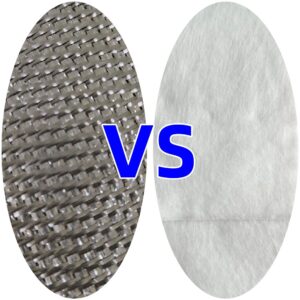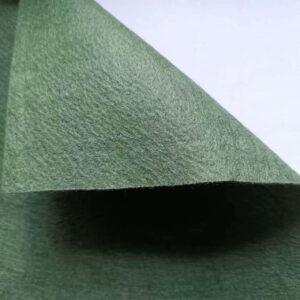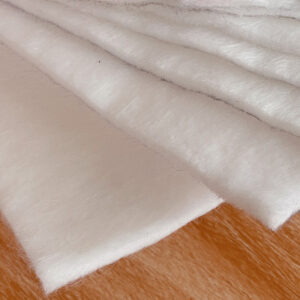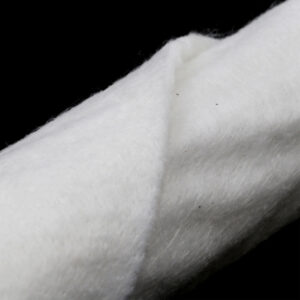In the rapidly evolving world of construction and civil engineering, the choice of materials can make or break your project. Geotextiles play a crucial role in soil stabilization, drainage, and erosion control, making the decision of selecting the right supplier essential. With China emerging as a powerhouse in geotextile production, navigating the landscape of suppliers can feel daunting. This guide is designed to simplify the process for you. We’ll delve into key considerations such as quality standards, material types, and supplier credibility, empowering you to make informed choices. From innovative manufacturing methods to reliable logistics, every aspect will be explored to ensure you find the best geotextile suppliers in China. Join us as we unlock the secrets to sourcing high-quality geotextiles that will enhance the durability and success of your projects. Whether you’re a seasoned professional or a newcomer, this ultimate guide will set you on the path to success.
Understanding the Different Types of Geotextiles
 Geotextiles are a versatile and essential component in construction and civil engineering projects, providing solutions for soil stabilization, drainage, filtration, and erosion control. There are several types of geotextiles, each with unique properties tailored to specific applications. Understanding these types is crucial in selecting the right material for your project.
Geotextiles are a versatile and essential component in construction and civil engineering projects, providing solutions for soil stabilization, drainage, filtration, and erosion control. There are several types of geotextiles, each with unique properties tailored to specific applications. Understanding these types is crucial in selecting the right material for your project.
Woven geotextiles are made by interlacing yarns or fibers in a regular pattern, creating a strong and durable fabric. These geotextiles are known for their high tensile strength and load-bearing capacity, making them ideal for applications such as road construction, embankments, and retaining walls. Woven geotextiles provide excellent soil reinforcement and separation, ensuring long-term stability and preventing soil erosion.
Non-woven geotextiles are produced by bonding fibers together through mechanical, chemical, or thermal processes. These fabrics have a random arrangement of fibers, resulting in a porous structure that allows for effective filtration and drainage. Non-woven geotextiles are commonly used in applications where water flow and soil filtration are critical, such as in drainage systems, landfill liners, and erosion control projects. Their ability to filter fine particles while allowing water to pass through makes them an indispensable material in many construction scenarios.
Knitted geotextiles are created using a knitting process that interlocks loops of yarn, producing a fabric with unique properties. These geotextiles offer a balance of strength and flexibility, making them suitable for applications that require both reinforcement and adaptability. Knitted geotextiles are often used in slope stabilization, coastal protection, and soil erosion control. Their ability to conform to irregular surfaces and provide consistent reinforcement makes them a valuable choice for challenging terrains.
Key Factors to Consider When Choosing Geotextile Suppliers
Selecting the right geotextile supplier is a critical step in ensuring the success of your construction project. Several factors must be considered to make an informed decision, each contributing to the overall quality, performance, and reliability of the geotextiles you procure.
First and foremost, consider the quality of the geotextiles offered by the supplier. Quality is paramount as it directly impacts the performance and longevity of the material in your project. Ensure that the supplier adheres to industry standards and utilizes high-quality raw materials in their manufacturing processes. Requesting samples and conducting thorough testing can provide insights into the durability, tensile strength, and filtration capabilities of the geotextiles.
Another important factor is the range of products offered by the supplier. A reputable geotextile supplier should have a diverse portfolio of products tailored to various applications. This ensures that you can find the right type of geotextile for your specific project needs. Additionally, consider whether the supplier offers customizable solutions, allowing you to tailor the geotextiles to meet unique project requirements.
Customer service and support are also crucial considerations when choosing a geotextile supplier. A supplier with excellent customer service can provide valuable technical support, guidance, and assistance throughout the procurement and implementation process. Look for suppliers who are responsive, knowledgeable, and willing to collaborate with you to address any challenges or concerns that may arise. This level of support can significantly enhance the overall experience and success of your project.
Evaluating Supplier Credentials and Certifications
When sourcing geotextiles from suppliers in China, evaluating their credentials and certifications is essential to ensure you are dealing with reputable and reliable companies. Certifications and industry credentials serve as indicators of a supplier’s commitment to quality, safety, and environmental standards.
One of the primary certifications to look for is ISO 9001, which signifies that the supplier adheres to internationally recognized quality management standards. ISO 9001 certification ensures that the supplier has established processes and procedures to consistently produce high-quality products. This certification also indicates that the supplier is committed to continuous improvement and customer satisfaction.
In addition to quality management certifications, consider whether the supplier holds environmental certifications such as ISO 14001. This certification demonstrates the supplier’s commitment to environmental sustainability and responsible manufacturing practices. By choosing a supplier with ISO 14001 certification, you can be confident that the geotextiles are produced with minimal environmental impact and adhere to strict environmental regulations.
Another important credential to consider is the supplier’s compliance with industry-specific standards and regulations. For example, geotextiles used in transportation infrastructure projects should meet the specifications set by relevant authorities and organizations. Requesting documentation and verification of compliance with industry standards can provide assurance that the geotextiles meet the necessary performance and safety requirements for your project.
The Role of Quality Control in Geotextile Manufacturing
Quality control is a critical aspect of geotextile manufacturing, ensuring that the products meet the required specifications and perform effectively in their intended applications. A robust quality control process involves several stages, from raw material selection to final product inspection, each contributing to the overall quality and reliability of the geotextiles.
The quality control process begins with the selection of raw materials. Reputable geotextile manufacturers source high-quality fibers and yarns, ensuring that the raw materials meet stringent quality standards. This initial step is crucial as the quality of the raw materials directly impacts the performance and durability of the finished geotextiles. Manufacturers often conduct thorough testing and inspection of raw materials to verify their properties and suitability for production.
During the manufacturing process, quality control measures are implemented at various stages to monitor and maintain product consistency. This includes regular inspections, testing, and monitoring of machinery and equipment to ensure that the geotextiles are produced according to the specified parameters. Manufacturers may also employ advanced technologies and automated systems to enhance precision and accuracy in the production process.
The final stage of quality control involves rigorous testing and inspection of the finished geotextiles. This includes evaluating key properties such as tensile strength, elongation, permeability, and filtration efficiency. Manufacturers use standardized testing methods and equipment to verify that the geotextiles meet the required specifications and performance criteria. Any deviations or defects identified during this stage are addressed promptly to ensure that only high-quality products are delivered to customers.
Comparing Pricing and Value Among Suppliers
When choosing geotextile suppliers, pricing and value are important considerations that can significantly impact your project’s budget and overall success. While it may be tempting to opt for the lowest-priced option, it is essential to carefully evaluate the value offered by each supplier to ensure you are making a cost-effective and informed decision.
Start by obtaining detailed quotes from multiple suppliers, including a breakdown of costs for materials, shipping, and any additional services provided. This will allow you to compare prices and identify any significant discrepancies. Keep in mind that the lowest price does not always equate to the best value. Assess the quality of the geotextiles, the supplier’s reputation, and the level of customer support provided to determine the overall value offered.
Consider the long-term benefits and cost savings associated with high-quality geotextiles. While premium geotextiles may come with a higher upfront cost, their superior performance, durability, and longevity can result in significant cost savings over time. High-quality geotextiles require less frequent replacement and maintenance, reducing overall project costs and minimizing disruptions.
Additionally, evaluate the supplier’s ability to provide value-added services such as technical support, custom solutions, and timely delivery. Suppliers who offer comprehensive support and tailored solutions can enhance the efficiency and success of your project, providing added value beyond the initial purchase. Collaborating with a supplier who understands your specific needs and can offer expert guidance can significantly contribute to the overall value of your investment in geotextiles.
The Importance of Supplier Reputation and Reviews
A supplier’s reputation and customer reviews are valuable indicators of their reliability, product quality, and customer service. When selecting a geotextile supplier, it is essential to conduct thorough research and gather insights from other customers to make an informed decision.
Begin by exploring the supplier’s online presence, including their website, social media profiles, and industry forums. Look for customer testimonials, case studies, and reviews that provide insights into the supplier’s performance and customer satisfaction. Positive reviews and testimonials from reputable sources can offer reassurance that the supplier is reliable and delivers high-quality products.
Additionally, consider reaching out to industry peers and colleagues who have experience working with geotextile suppliers in China. Their firsthand experiences and recommendations can provide valuable insights into the supplier’s reputation and reliability. Networking with industry professionals can also help you identify potential red flags or concerns that may not be evident from online reviews alone.
It is also important to assess the supplier’s track record and history in the industry. Suppliers with a long-standing presence and a proven track record of successful projects are more likely to be reliable and trustworthy. Look for information on the supplier’s past projects, clients, and any industry awards or recognitions they have received. A supplier with a strong reputation and a history of delivering quality products is more likely to meet your expectations and requirements.
Logistics and Supply Chain Considerations
Effective logistics and supply chain management are crucial factors to consider when choosing a geotextile supplier. Timely delivery, efficient transportation, and reliable supply chain processes can significantly impact the success and timeline of your project. Assessing the supplier’s logistics capabilities can help you avoid potential delays and disruptions.
Start by evaluating the supplier’s production capacity and lead times. Understanding the supplier’s production capabilities can provide insights into their ability to meet your project deadlines and requirements. Suppliers with robust production capacity and efficient manufacturing processes are more likely to deliver geotextiles on time, ensuring that your project progresses smoothly.
Consider the supplier’s location and proximity to your project site. Suppliers located closer to your project site can offer faster and more cost-effective delivery options. Additionally, assess the supplier’s shipping and transportation methods to ensure that the geotextiles will be delivered in good condition. Reliable suppliers should have established logistics partnerships and processes to handle transportation and delivery efficiently.
Another important aspect to consider is the supplier’s inventory management and stock availability. Suppliers with well-managed inventory systems and adequate stock levels can provide quick turnaround times and minimize the risk of delays. Inquire about the supplier’s ability to handle large orders and their contingency plans for unexpected demands or disruptions. A supplier with a robust supply chain and inventory management system can offer greater reliability and flexibility.
Building Long-Term Relationships with Geotextile Suppliers
Establishing and maintaining long-term relationships with geotextile suppliers can provide numerous benefits for your construction projects. Strong supplier relationships foster collaboration, trust, and mutual understanding, leading to improved product quality, better support, and overall project success.
Effective communication is the foundation of a successful supplier relationship. Maintain open and transparent communication with your suppliers, clearly articulating your project requirements, timelines, and expectations. Regularly update suppliers on project progress and any changes or challenges that may arise. This proactive approach helps suppliers understand your needs and enables them to provide timely and effective solutions.
Collaborate with your suppliers to explore opportunities for innovation and continuous improvement. Engage in discussions about new technologies, materials, and manufacturing processes that can enhance the performance and efficiency of geotextiles. Suppliers who are willing to invest in research and development and share their expertise can contribute to the success of your projects and provide a competitive edge.
Recognize and appreciate the contributions of your suppliers. Building a positive and respectful relationship with your suppliers can lead to greater loyalty and commitment. Acknowledge their efforts, provide constructive feedback, and seek opportunities for mutual growth and success. Long-term supplier relationships built on trust and collaboration can result in more favorable terms, priority access to new products, and enhanced support for your future projects.
Conclusion and Next Steps for Your Geotextile Needs
Choosing the best geotextile suppliers in China requires careful consideration of various factors, including the types of geotextiles, supplier credentials, quality control processes, pricing, reputation, logistics, and long-term relationship potential. By thoroughly evaluating these aspects, you can make informed decisions that ensure the success and durability of your construction projects.
As you embark on your search for geotextile suppliers, take the time to research and gather information from multiple sources. Request samples, conduct testing, and seek recommendations from industry peers to gain a comprehensive understanding of the supplier’s capabilities and reliability. Prioritize quality, value, and customer support to ensure that you are partnering with suppliers who can meet your specific needs and exceed your expectations.
Remember that the right geotextile supplier can significantly contribute to the overall success of your project. By choosing reputable and reliable suppliers, you can enhance the performance, durability, and efficiency of your construction projects. Invest in building strong and long-term relationships with your suppliers, fostering collaboration and innovation for continued success.
In conclusion, the journey to finding the best geotextile suppliers in China may be challenging, but with the right approach and thorough evaluation, you can unlock quality and achieve outstanding results for your projects. Empower yourself with knowledge, seek expert guidance, and make informed decisions to ensure that your geotextile needs are met with excellence and reliability. The success of your construction projects depends on the quality of the materials you choose, and by following this ultimate guide, you are well-equipped to make the best choices for your geotextile requirements.




